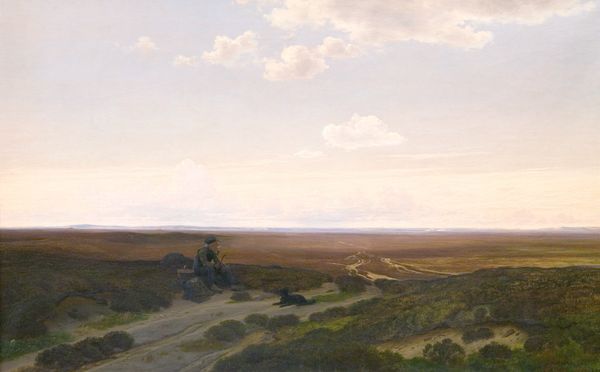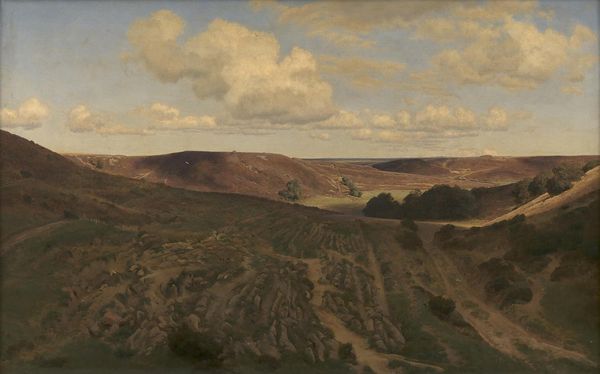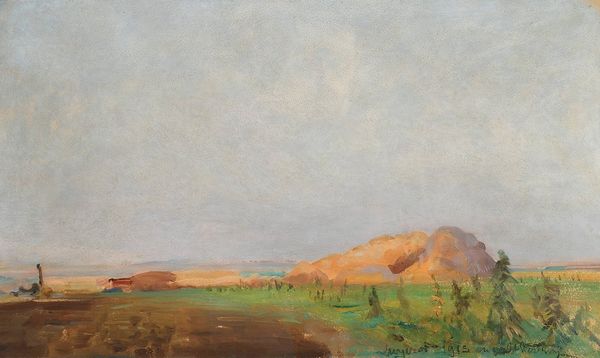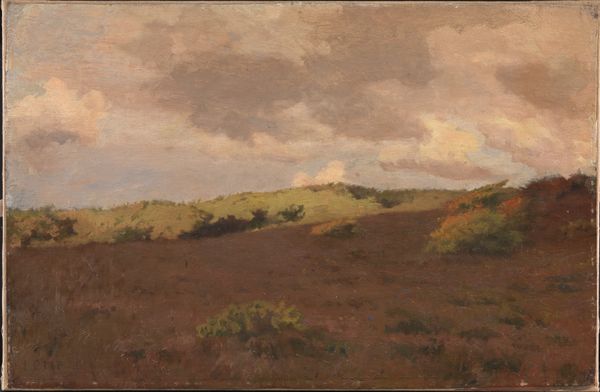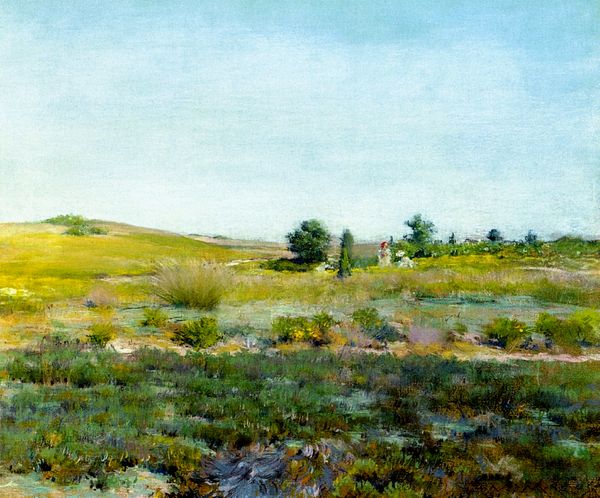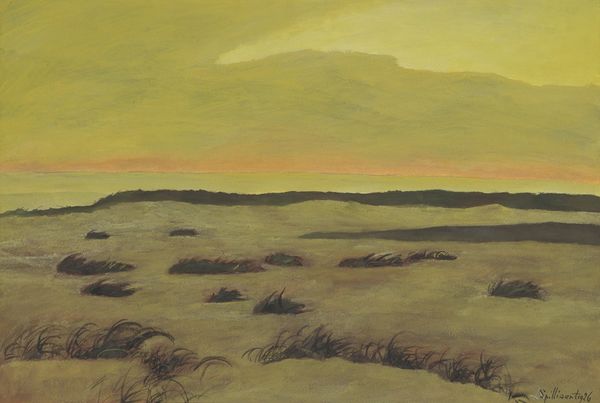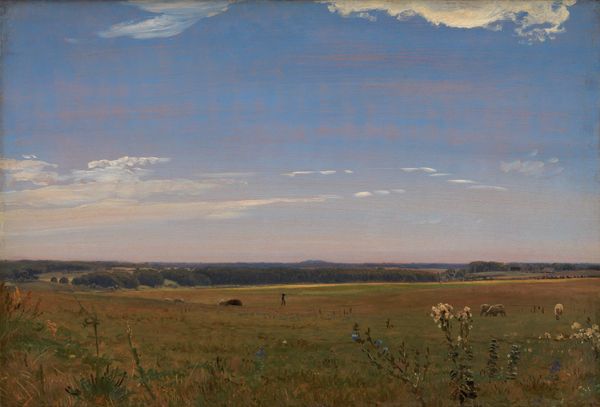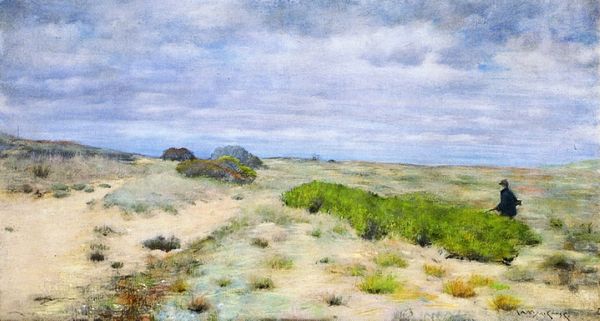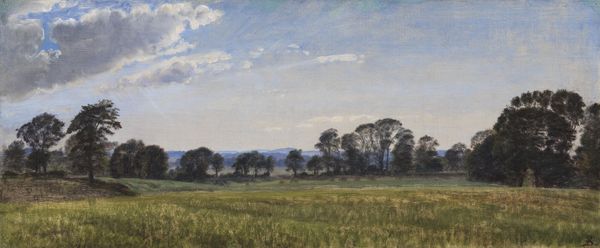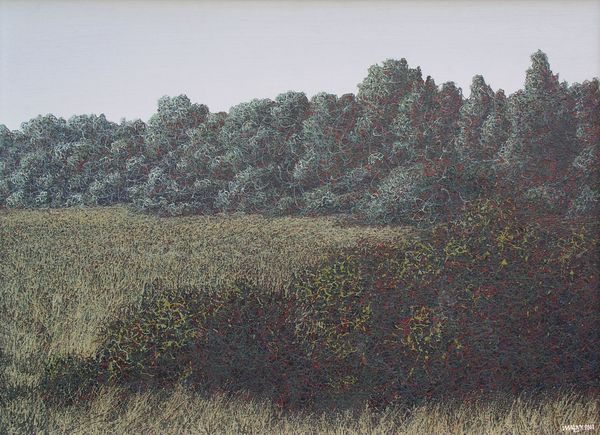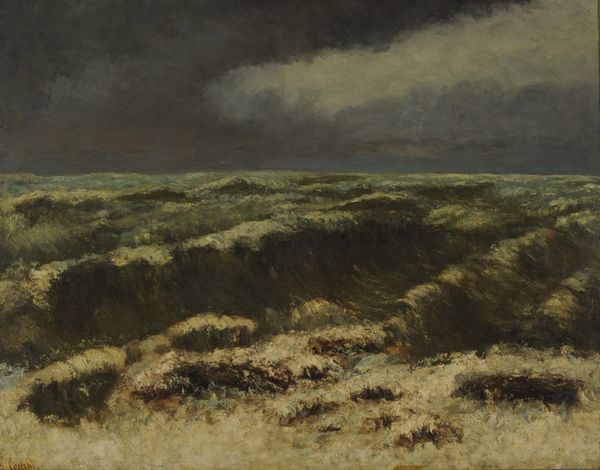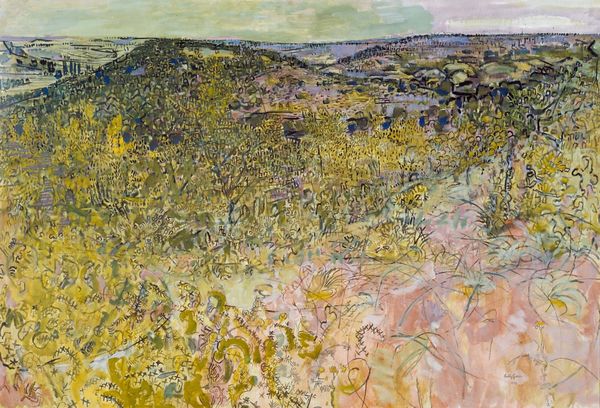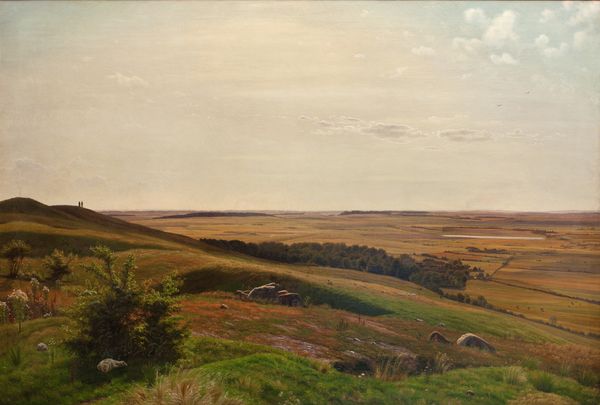
Dimensions: 42 cm (height) x 65 cm (width) (Netto), 51.1 cm (height) x 74.1 cm (width) x 7.3 cm (depth) (Brutto)
Curator: Looking at Frederik Vermehren's 1854 oil painting "Study of a Moor," what strikes you first? Editor: A wash of earth tones. The subdued palette, the way the brushstrokes seem to mimic the low, scrubby vegetation. It evokes a feeling of isolation, doesn’t it? A landscape devoid of human presence, almost austere. Curator: Indeed. This work offers a vital insight into Vermehren’s exploration of the Danish landscape, situating it within a broader narrative of national identity formation during the mid-19th century. It reflects the prevailing artistic focus on portraying the "authentic" Danish character through its land. Editor: And what a land! It's fascinating how romanticism gets tangled up with nascent realism. This isn’t idealized nature; it's a seemingly unromantic depiction of a moor. One wonders how it spoke to ideas about national identity in a time when nations were busy defining themselves. Were ordinary people reflected and empowered by this imagery or subtly reminded of a specific political landscape? Curator: Vermehren was invested in depicting the common, everyday aspects of Danish life. It's tempting to perceive a political agenda at play, to discern in it an articulation of cultural values—but art and political interpretation always depend on current cultural ideologies. This scene isn’t a dramatic vista; it’s intentionally unremarkable, urging viewers to appreciate the subtle beauty inherent in their immediate surroundings. Editor: Subtlety as a political tool, then. Highlighting the value of overlooked landscapes can be a subtle act of empowerment. Curator: In a period marked by substantial socio-political changes, his landscapes contributed to solidifying an image of Denmark as a place characterized by serenity and natural harmony, offering respite from the anxieties and upheavals of contemporary political turmoil. Editor: I find myself now reflecting on the narratives such images obscure. Who worked this land? Whose stories are erased by this romantic, quiet scene? Whose access was restricted? That mound in the distance hints at ancient stories. Curator: Absolutely, and engaging with such historical artworks also asks that we recognize not only the intent of the artists, but also that any political context shapes what aspects are highlighted and how. Editor: An evocative reminder to actively read silences as loud pronouncements in their own right. Let's not just admire the serene palette but challenge ourselves to reflect critically.
Comments
No comments
Be the first to comment and join the conversation on the ultimate creative platform.
